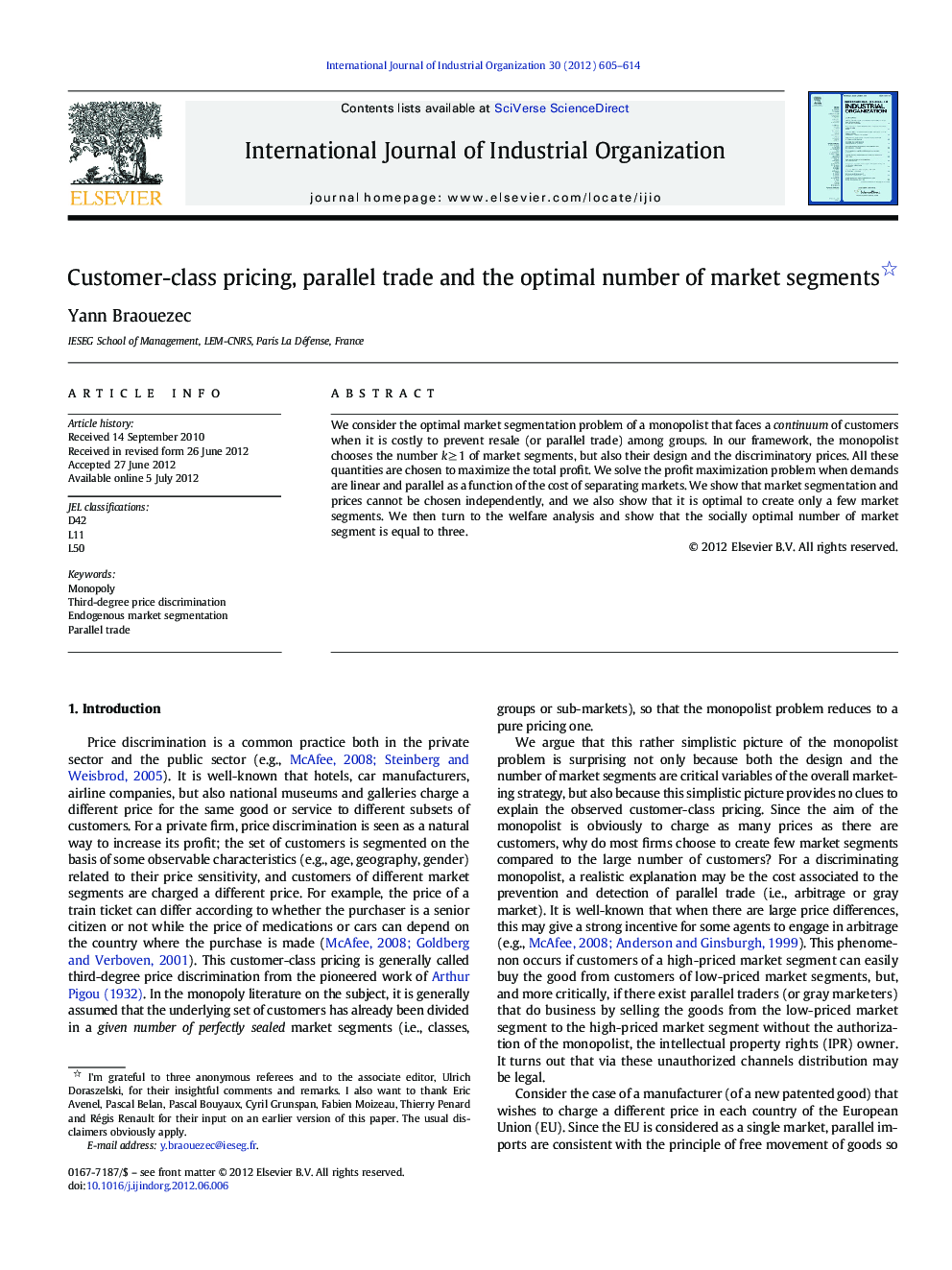| Article ID | Journal | Published Year | Pages | File Type |
|---|---|---|---|---|
| 5078032 | International Journal of Industrial Organization | 2012 | 10 Pages |
We consider the optimal market segmentation problem of a monopolist that faces a continuum of customers when it is costly to prevent resale (or parallel trade) among groups. In our framework, the monopolist chooses the number k â¥Â 1 of market segments, but also their design and the discriminatory prices. All these quantities are chosen to maximize the total profit. We solve the profit maximization problem when demands are linear and parallel as a function of the cost of separating markets. We show that market segmentation and prices cannot be chosen independently, and we also show that it is optimal to create only a few market segments. We then turn to the welfare analysis and show that the socially optimal number of market segment is equal to three.
⺠Both market segmentation and prices are endogenous. ⺠Market segments and prices cannot be chosen independently. ⺠The optimal number of market segments depends of the cost of controlling parallel trade. ⺠The socially optimal number of market segments is equal to three.
